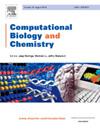通过分子对接、动力学模拟和 DFT 计算鉴定针对磷脂酰肌醇 3-激酶 (PI3K) 的治疗化合物
IF 2.6
4区 生物学
Q2 BIOLOGY
引用次数: 0
摘要
癌症是导致全球死亡的主要原因之一,其特征是不受控制的细胞增殖。磷脂酰肌醇 3- 激酶(PI3K)是调节细胞生长和存活所必需的一种酶,在肿瘤中经常失调。目前可用的 PI3K 抑制剂(如 Duvelisib)有很大的副作用,因此需要更安全的疗法。没食子酸是一种天然酚类化合物,具有显著的抗肿瘤特性,是一种很有前景的药物开发支架。本研究旨在利用先进的计算技术,如 PASS 预测、分子对接、ADMET(吸收、分布、代谢、排泄和毒性)分析、密度泛函理论(DFT)计算和分子动力学(MD)模拟,从没食子酸衍生物中找出潜在的 PI3K 抑制剂。根据预测的抗肿瘤活性,从 90 种衍生物以及对照药物 Duvelisib 中选出了 21、37、44、68 和 75 这五种衍生物。化合物 68 被证明是最有希望的候选化合物,它与 PI3K 受体的结合亲和力很强,与关键残基形成了多个氢键,并在 500 ns 的 MD 模拟中显示出稳定的相互作用。ADMET 分析表明,化合物 68 具有良好的药代动力学特性。化合物 21 也显示出很强的结合亲和力,但在药代动力学特征方面表现出局限性。这项研究旨在加深我们对 PI3K 抑制过程中配体-蛋白质动力学的理解,并强调没食子酸衍生物在开发更安全、更有效的 PI3K 抑制剂用于癌症治疗方面的潜力。我们的研究结果支持进一步对化合物 68 进行实验验证,并表明没食子酸衍生物有助于开发更安全的疗法。本文章由计算机程序翻译,如有差异,请以英文原文为准。
Identification of Therapeutic Compounds Targeting Phosphatidylinositol 3-Kinase (PI3K) Through Molecular Docking, Dynamics Simulation, and DFT Calculations
Cancer is one of the leading causes of death worldwide and characterized by uncontrolled cell proliferation. The phosphatidylinositol 3-kinase (PI3K) is an enzyme, which is essential for regulating cell growth and survival, is often dysregulated in tumors. Currently available PI3K inhibitors (like Duvelisib) have significant side effects, highlighting the need for safer therapeutics. Gallic acid, a natural phenolic compound with remarkable antineoplastic properties, showcases a promising scaffold for drug development. The aim of this study is to identify potential PI3K inhibitors from gallic acid derivatives using advanced computational techniques such as PASS prediction, molecular docking, ADMET (Absorption, Distribution, Metabolism, Excretion, and Toxicity) analysis, density functional theory (DFT) calculations, and molecular dynamics (MD) simulations. Five derivatives 21, 37, 44, 68 and 75 were selected based on their predicted antineoplastic activity among 90 derivatives, as well as the control drug Duvelisib. Compound 68 proved to be the most promising candidate, exhibiting strong binding affinity to the PI3K receptor, forming multiple hydrogen bonds with key residues, and showing stable interactions over 500 ns MD simulation. ADMET analysis revealed that compound 68 had favorable pharmacokinetic properties. Compound 21 also showed strong binding affinity but exhibited limitations in its pharmacokinetic profile. This study aims to improve our understanding of ligand-protein dynamics in PI3K inhibition and highlight the potential of gallic acid derivatives in developing safer and more effective PI3K inhibitors for cancer therapy. Our results support further experimental validation of compound 68 and suggest that gallic acid derivatives could contribute to the development of safer therapies.
求助全文
通过发布文献求助,成功后即可免费获取论文全文。
去求助
来源期刊

Computational Biology and Chemistry
生物-计算机:跨学科应用
CiteScore
6.10
自引率
3.20%
发文量
142
审稿时长
24 days
期刊介绍:
Computational Biology and Chemistry publishes original research papers and review articles in all areas of computational life sciences. High quality research contributions with a major computational component in the areas of nucleic acid and protein sequence research, molecular evolution, molecular genetics (functional genomics and proteomics), theory and practice of either biology-specific or chemical-biology-specific modeling, and structural biology of nucleic acids and proteins are particularly welcome. Exceptionally high quality research work in bioinformatics, systems biology, ecology, computational pharmacology, metabolism, biomedical engineering, epidemiology, and statistical genetics will also be considered.
Given their inherent uncertainty, protein modeling and molecular docking studies should be thoroughly validated. In the absence of experimental results for validation, the use of molecular dynamics simulations along with detailed free energy calculations, for example, should be used as complementary techniques to support the major conclusions. Submissions of premature modeling exercises without additional biological insights will not be considered.
Review articles will generally be commissioned by the editors and should not be submitted to the journal without explicit invitation. However prospective authors are welcome to send a brief (one to three pages) synopsis, which will be evaluated by the editors.
 求助内容:
求助内容: 应助结果提醒方式:
应助结果提醒方式:


